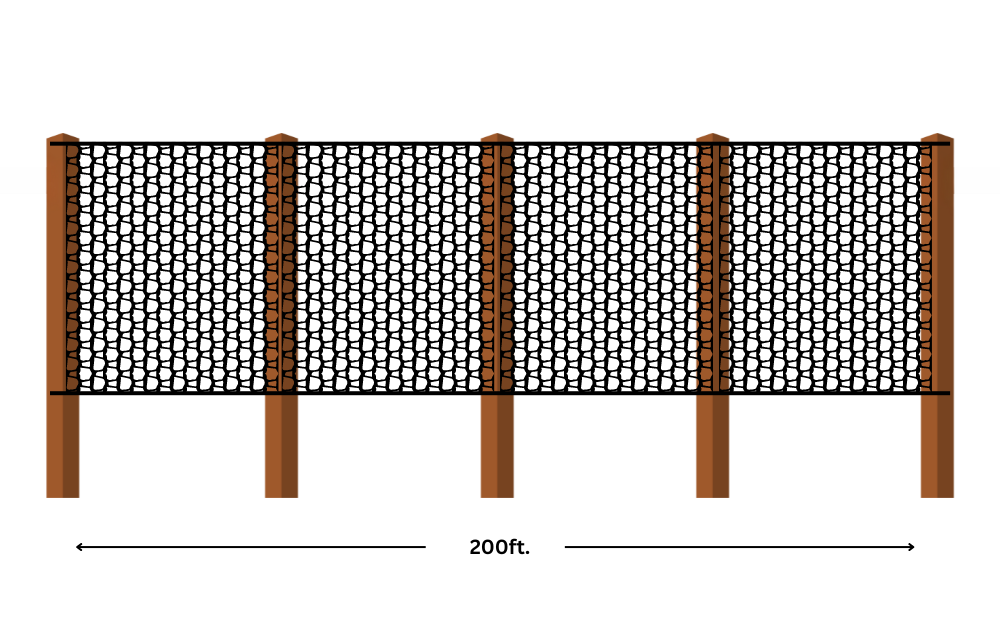When it comes to spectator safety and mitigating the risk of collateral damage from errant flying objects, a netting barrier is the best first line of defence. These barriers are found in community parks and professional sports fields alike and come in all shapes and sizes.
This guide is to serve as a jumping off point for selecting the right netting solution for your unique situation. While these are traditionally quite custom in nature, this will serve as an informative guide to get you an idea of what you need for your prospective space.
We’ve designed and installed netting barriers from coast-to-coast and while some are certainly similar in nature, no two installations are the same. Given the unique design of existing or proposed sports fields, our enginnering team is always up to the challenge of placing the right barrier in exactly the right place.
Given the rise in popularity of the game of golf, our netting barriers are in high demand across the country. With more players teeing off than ever before, custom barriers are now needed to help keep balls in play around fairways and other hazardous areas.
In addition to providing a barrier around areas such as driving ranges and fairways, our netting barriers have also been installed to protect club houses and other non-golf areas found in country clubs such as dining areas and pools.
Type of netting used for golf applications:
When it comes to speed, not much matches the velocity of a baseball coming off a bat. With foul balls a part of the game, spectators need to keep their head on a swivel and operators continue to look for more ways to make taking in a game safer.
We design a wide array of netting solutions for baseball applications including backstops, foul ball protection, outfield netting, batting cages, L-screens and many others.
Type of netting used for baseball applications:
The goal with the majority of soccer netting applications is keeping balls in play. With new facilities being designed with multiple pitches, the need for seperation has never been higher.
Our soccer netting solutions are used to divide existing pitches, act as a backstop behind soccer goals and as barriers to keep balls out of residential or wooded areas.
Type of netting used for soccer applications:
The only thing that might rival the speed of a baseball coming off a bat is a frozen hockey puck from a stick. Either way you slice it, that black biscuit is moving at high speeds and often ends up over the boards ending up in a stoppage in play, or worse, an injury.
With new regulations requiring all hockey arenas to have sufficient spectator netting, outfitting these facilities is a big part of our business.
We offer two options for hockey spectator netting:
or
The majority of our outdoor netting barrier installations include poles. In some projects, poles are already in place, in others, we’ll need to plan for installing new poles. While there are some variances, generally speaking, we use red pine Class A poles that are between 35′ and 45′ in height. We will typically space each pole between 45′ and 50′ on centre.
The next question we often field is, how much netting and poles do I need for a specific length of field?
While there are some calculations out there, we tend to look at how many panels of netting are required for a specific length. In the example of a 200-foot run, four netting panels would be required along with five poles spaced at 50 feet and two guide wires to complete the installation as illustrated below.
In the event of existing poles, our team can help supply just the netting and have it installed on the current poles as well.

When you pick up the phone to chat with us about your next netting project, here’s a few common questions our team will likely ask you to help us get an accurate price. It’s a good idea to have this information on-hand before an initial consultation.
This will help us determine what is needed on-site.
This will help us select the right type of netting based on the size of ball or other objects that are required to be contained.
Is it a construction site? What kind of vehicles can we get to the site? Any information about site conditions are always appreciated.
We can provide pricing for installation or without.
Again, knowing the site condition allows us to control for any possible installation issues that might arise at a later time.
An approximate length or coverage area is key to getting you an accurate price on your project.
If you can dream it, we can build it.